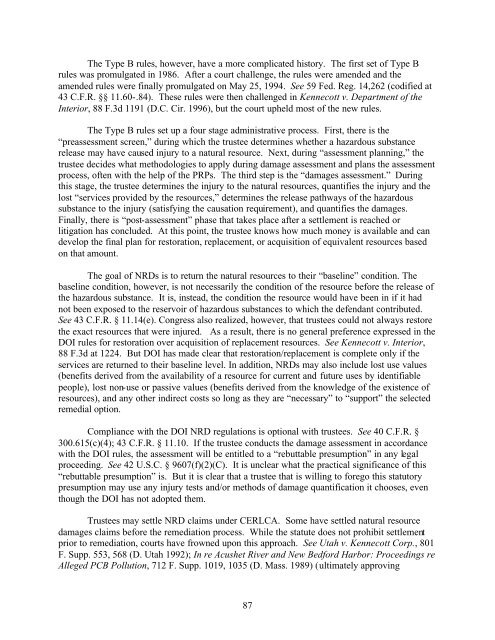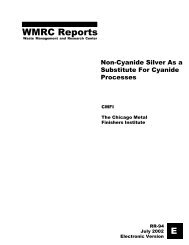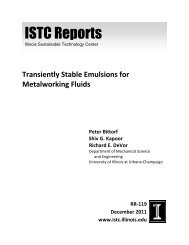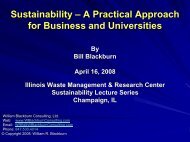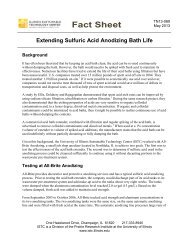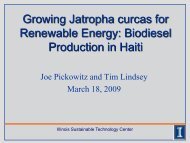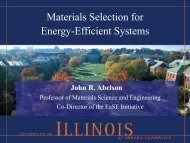Natural Resource Damage Assessment: Methods and Cases
Natural Resource Damage Assessment: Methods and Cases
Natural Resource Damage Assessment: Methods and Cases
You also want an ePaper? Increase the reach of your titles
YUMPU automatically turns print PDFs into web optimized ePapers that Google loves.
The Type B rules, however, have a more complicated history. The first set of Type B<br />
rules was promulgated in 1986. After a court challenge, the rules were amended <strong>and</strong> the<br />
amended rules were finally promulgated on May 25, 1994. See 59 Fed. Reg. 14,262 (codified at<br />
43 C.F.R. §§ 11.60-.84). These rules were then challenged in Kennecott v. Department of the<br />
Interior, 88 F.3d 1191 (D.C. Cir. 1996), but the court upheld most of the new rules.<br />
The Type B rules set up a four stage administrative process. First, there is the<br />
“preassessment screen,” during which the trustee determines whether a hazardous substance<br />
release may have caused injury to a natural resource. Next, during “assessment planning,” the<br />
trustee decides what methodologies to apply during damage assessment <strong>and</strong> plans the assessment<br />
process, often with the help of the PRPs. The third step is the “damages assessment.” During<br />
this stage, the trustee determines the injury to the natural resources, quantifies the injury <strong>and</strong> the<br />
lost “services provided by the resources,” determines the release pathways of the hazardous<br />
substance to the injury (satisfying the causation requirement), <strong>and</strong> quantifies the damages.<br />
Finally, there is “post-assessment” phase that takes place after a settlement is reached or<br />
litigation has concluded. At this point, the trustee knows how much money is available <strong>and</strong> can<br />
develop the final plan for restoration, replacement, or acquisition of equivalent resources based<br />
on that amount.<br />
The goal of NRDs is to return the natural resources to their “baseline” condition. The<br />
baseline condition, however, is not necessarily the condition of the resource before the release of<br />
the hazardous substance. It is, instead, the condition the resource would have been in if it had<br />
not been exposed to the reservoir of hazardous substances to which the defendant contributed.<br />
See 43 C.F.R. § 11.14(e). Congress also realized, however, that trustees could not always restore<br />
the exact resources that were injured. As a result, there is no general preference expressed in the<br />
DOI rules for restoration over acquisition of replacement resources. See Kennecott v. Interior,<br />
88 F.3d at 1224. But DOI has made clear that restoration/replacement is complete only if the<br />
services are returned to their baseline level. In addition, NRDs may also include lost use values<br />
(benefits derived from the availability of a resource for current <strong>and</strong> future uses by identifiable<br />
people), lost non-use or passive values (benefits derived from the knowledge of the existence of<br />
resources), <strong>and</strong> any other indirect costs so long as they are “necessary” to “support” the selected<br />
remedial option.<br />
Compliance with the DOI NRD regulations is optional with trustees. See 40 C.F.R. §<br />
300.615(c)(4); 43 C.F.R. § 11.10. If the trustee conducts the damage assessment in accordance<br />
with the DOI rules, the assessment will be entitled to a “rebuttable presumption” in any legal<br />
proceeding. See 42 U.S.C. § 9607(f)(2)(C). It is unclear what the practical significance of this<br />
“rebuttable presumption” is. But it is clear that a trustee that is willing to forego this statutory<br />
presumption may use any injury tests <strong>and</strong>/or methods of damage quantification it chooses, even<br />
though the DOI has not adopted them.<br />
Trustees may settle NRD claims under CERLCA. Some have settled natural resource<br />
damages claims before the remediation process. While the statute does not prohibit settlement<br />
prior to remediation, courts have frowned upon this approach. See Utah v. Kennecott Corp., 801<br />
F. Supp. 553, 568 (D. Utah 1992); In re Acushet River <strong>and</strong> New Bedford Harbor: Proceedings re<br />
Alleged PCB Pollution, 712 F. Supp. 1019, 1035 (D. Mass. 1989) (ultimately approving<br />
87


